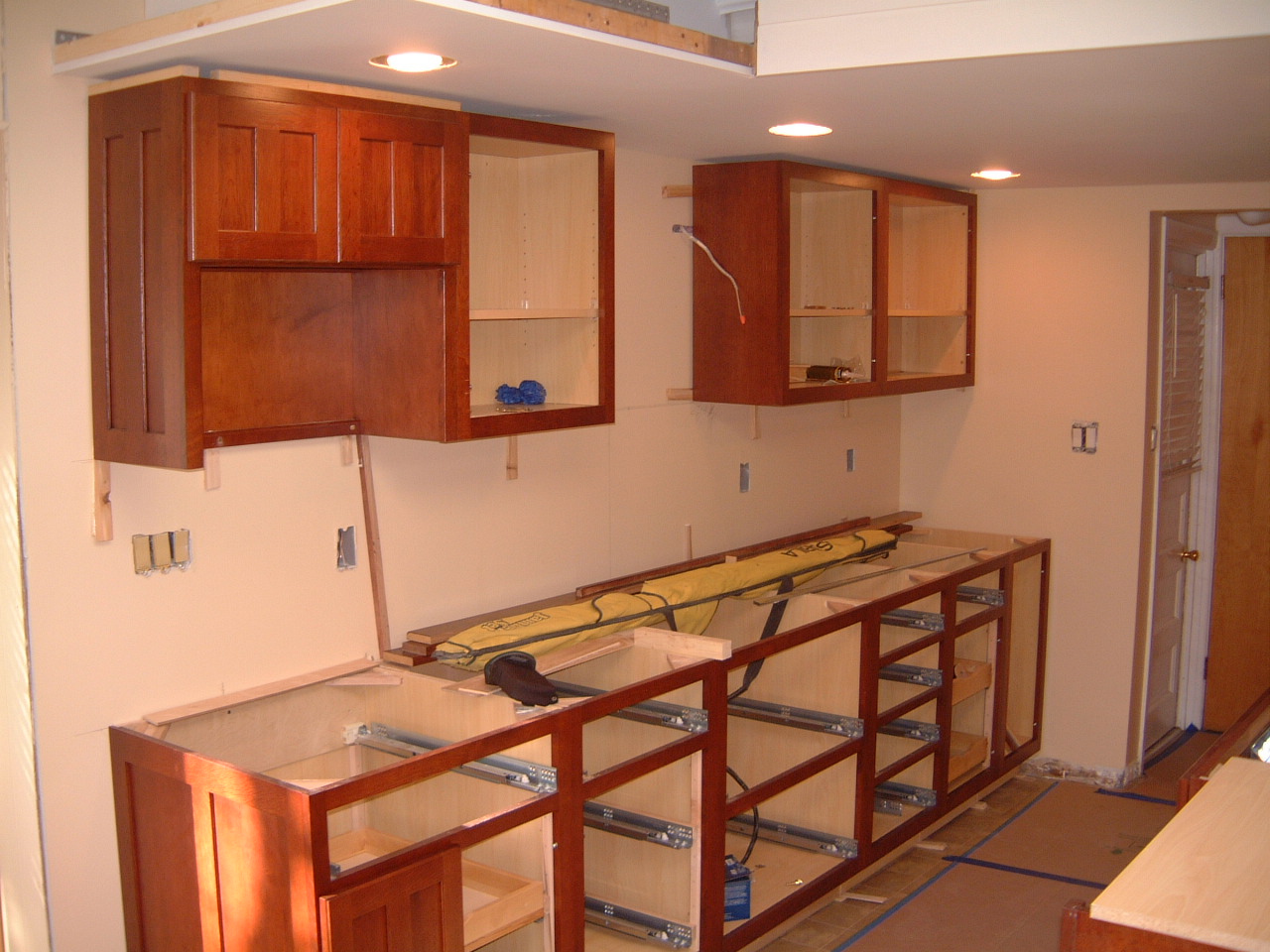Understanding the Challenges

Installing cabinets without removing the countertop presents a unique set of challenges that require careful planning and execution. This approach, while potentially appealing for its convenience and cost-effectiveness, comes with inherent risks and complications that need to be carefully considered.
Potential Risks and Complications
The decision to install cabinets without removing the countertop is not without its risks.
- Damage to the Countertop: The most significant risk is potential damage to the countertop during the installation process. Improper handling, tight spaces, or the use of heavy tools can lead to scratches, chips, or cracks.
- Installation Accuracy: Working around an existing countertop can make it challenging to achieve precise cabinet alignment and level. This can result in uneven cabinet placement, gaps, or misaligned doors and drawers.
- Limited Access: The presence of the countertop can restrict access to the wall and cabinet installation areas, making it difficult to secure cabinets properly and install them securely.
- Plumbing and Electrical Obstacles: Existing plumbing and electrical lines behind the countertop can pose significant challenges, requiring careful planning and potential adjustments to avoid damage or interference.
Factors to Consider
Several key factors must be considered when assessing the feasibility of installing cabinets without removing the countertop:
- Countertop Material: The type of countertop material plays a crucial role. Durable materials like granite or quartz are generally more resistant to damage, while softer materials like laminate or tile are more susceptible.
- Cabinet Size and Design: The size and design of the cabinets are important considerations. Larger, heavier cabinets can pose greater challenges in terms of maneuverability and installation. Additionally, cabinets with intricate designs or specialized features may require more space and access for proper installation.
- Existing Space and Access: The amount of available space between the countertop and the wall, as well as the accessibility of the installation area, are critical factors. Limited space or difficult access can significantly complicate the installation process.
- Skill Level and Experience: Installing cabinets without removing the countertop is a complex task that requires a high level of skill and experience. If you lack the necessary expertise, it is advisable to seek professional help to avoid potential damage or costly mistakes.
Methods and Techniques: Installing Cabinets Without Removing Countertop

Installing cabinets without removing the countertop is a common challenge faced by homeowners and DIY enthusiasts. While it may seem daunting, several methods can be employed to achieve this task successfully. These methods involve careful planning, precision, and the use of specialized tools and techniques.
Methods for Installing Cabinets Without Countertop Removal, Installing cabinets without removing countertop
This section Artikels the different methods available for installing cabinets without removing the countertop. Each method presents unique advantages and considerations, influencing the choice for a specific project.
- Using a Jig Saw: This method involves cutting a precise opening in the countertop to accommodate the cabinet. A jig saw, a power tool designed for cutting curves and intricate shapes, is used for this purpose. It requires careful measurements and a steady hand to ensure a clean and accurate cut.
- Employing a Router: A router, another power tool, can be used to create a precise groove in the countertop for the cabinet to fit into. This method is particularly suitable for cabinets with a flat bottom and requires a router bit specifically designed for creating grooves.
- Utilizing a Table Saw: A table saw, a stationary power tool used for cutting wood, can be employed to create a precise cut in the countertop. This method is suitable for cabinets with a straight bottom and requires careful measurements and a steady hand to ensure a clean and accurate cut.
- Implementing a Combination of Methods: A combination of the above methods can be used to install cabinets with different shapes and sizes. For instance, a jig saw can be used to cut the opening, while a router can be used to create a groove for the cabinet to sit flush with the countertop.
Installing Cabinets Using a Jig Saw
This method involves using a jig saw to cut an opening in the countertop for the cabinet to fit into. This technique is suitable for cabinets with various shapes and sizes and is relatively straightforward with the right tools and techniques.
Step-by-Step Guide
- Measure and Mark: Accurately measure the dimensions of the cabinet and mark the countertop for the opening. Ensure the markings are precise and consider the thickness of the countertop material.
- Secure the Countertop: Use clamps or other methods to secure the countertop in place to prevent movement during the cutting process. This ensures a straight and accurate cut.
- Cut the Opening: Using a jig saw with a fine-tooth blade, carefully cut along the marked lines. Start slowly and increase the speed as you gain confidence. Avoid applying excessive pressure to prevent the blade from binding or breaking.
- Smooth the Edges: After cutting the opening, use sandpaper or a sanding block to smooth the edges of the cut. This removes any rough edges and creates a clean finish.
- Install the Cabinet: Carefully slide the cabinet into the opening, ensuring it is level and flush with the countertop. Secure the cabinet to the countertop using screws or other appropriate fasteners.
Tips and Considerations

Installing cabinets without removing the countertop presents unique challenges, requiring careful planning and execution. This section provides practical tips, considerations for different countertop materials and cabinet styles, and techniques to ensure proper fit, alignment, and stability.
Countertop Material Considerations
The type of countertop material significantly influences the installation process. Different materials have varying levels of flexibility, requiring specific approaches to avoid damage or interference.
- Laminate countertops: These are generally easier to work with as they offer some flexibility. However, excessive force or improper cutting can damage the laminate surface. It is essential to use sharp tools and take extra care when working around the countertop.
- Solid surface countertops: Materials like Corian or granite are known for their durability and resistance to scratches. However, they are less flexible than laminate and require precision cutting and installation to avoid damaging the countertop or the cabinets.
- Stone countertops: Natural stone countertops, like marble or granite, are incredibly durable but can be challenging to work with. They are prone to chipping or cracking if not handled carefully. It is crucial to use specialized tools and techniques designed for stone countertops.
Cabinet Style Considerations
The style of cabinets you are installing also impacts the process. Different cabinet styles have unique features and dimensions that require specific installation methods.
- Base cabinets: These are typically the easiest to install without removing the countertop. They often have a flat bottom that can be easily aligned with the countertop edge. However, it is essential to ensure the cabinets are level and stable.
- Wall cabinets: Installing wall cabinets without removing the countertop requires extra care and precision. The countertop edge might interfere with the cabinet installation, necessitating adjustments or modifications to the cabinet design.
- Specialty cabinets: Cabinets with unique features, like curved edges or integrated appliances, may require specific techniques and tools for installation. It is essential to consult the manufacturer’s instructions and seek professional help if needed.
Ensuring Proper Fit, Alignment, and Stability
To ensure successful installation, prioritize proper fit, alignment, and stability. These factors contribute to the overall functionality and aesthetics of the cabinets.
- Measure twice, cut once: Accuracy is crucial when installing cabinets without removing the countertop. Double-check all measurements before cutting or drilling. This minimizes the risk of errors and ensures a perfect fit.
- Use shims for leveling: Uneven floors can affect the stability and alignment of the cabinets. Use shims to level the cabinets before securing them to the wall or floor. This ensures a consistent and aesthetically pleasing installation.
- Secure cabinets properly: Use appropriate fasteners to secure the cabinets to the wall or floor. The type of fastener will depend on the cabinet material and the wall or floor construction. Consult the manufacturer’s instructions for specific recommendations.
Using Templates for Accurate Installation
Creating templates for cabinet installation is a crucial step, especially when working with existing countertops. Templates ensure accurate positioning and prevent unnecessary adjustments during installation.
- Create templates for each cabinet: Use cardboard or plywood to create accurate templates for each cabinet. These templates serve as guides during the installation process, ensuring precise placement and alignment.
- Mark and cut the templates: Carefully mark the template based on the cabinet dimensions and the countertop edge. Cut the template precisely to ensure it accurately reflects the cabinet size and position.
- Use the templates for installation: Position the template on the wall or floor and mark the location for the cabinet. This eliminates the need for constant measuring and ensures a precise fit during installation.
Working with Limited Clearance
When working with limited clearance, it is essential to use specialized tools and techniques to avoid damaging the countertop or the cabinets.
- Use a jigsaw for tight spaces: A jigsaw is ideal for cutting cabinets in tight spaces, allowing for precise cuts and minimal interference with the countertop. Use a fine-tooth blade to avoid chipping or tearing the countertop material.
- Utilize a small drill for pilot holes: Before drilling into the countertop, use a small drill bit to create pilot holes. This minimizes the risk of splitting the countertop material and ensures a clean and secure installation.
- Consider using a cordless drill: A cordless drill provides greater flexibility and maneuverability in tight spaces. It allows for precise drilling without the need for a power cord, reducing the risk of snagging or tripping.
Installing cabinets without removing countertop – Installing cabinets without removing the countertop can be a clever way to refresh a kitchen without a full remodel. If you’re looking for a less invasive way to add storage, consider incorporating white bedroom wall shelves in your design.
These shelves can provide a stylish and practical solution for organizing items in your kitchen, freeing up valuable countertop space and creating a sense of openness. Similar to the approach with cabinets, installing shelves without removing the countertop allows you to upgrade your kitchen without a complete overhaul.
Installing cabinets without removing the countertop requires careful planning and precise measurements. While you’re focused on the structural details, remember to add a touch of personality to your space. Consider adding wall flags for bedroom to create a vibrant and unique atmosphere.
These flags can add a splash of color and pattern, complementing your new cabinets while reflecting your personal style. Once the cabinets are installed, the wall flags will complete the transformation, creating a space that’s both functional and aesthetically pleasing.